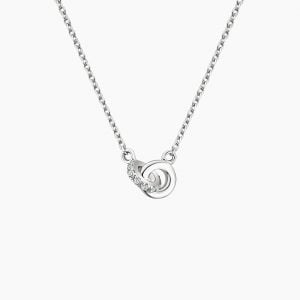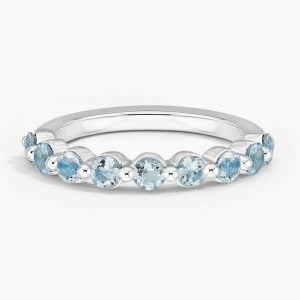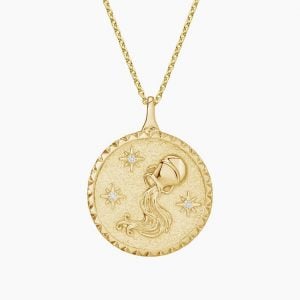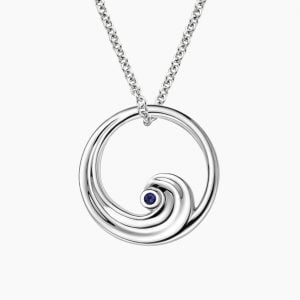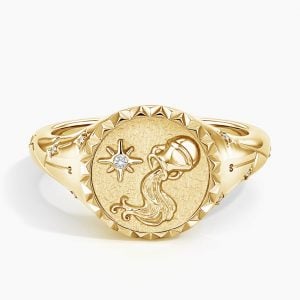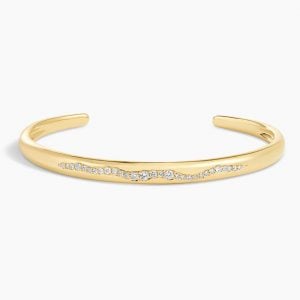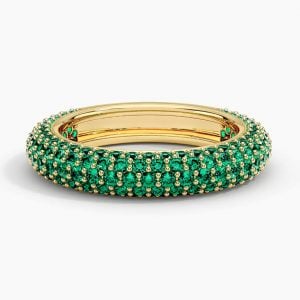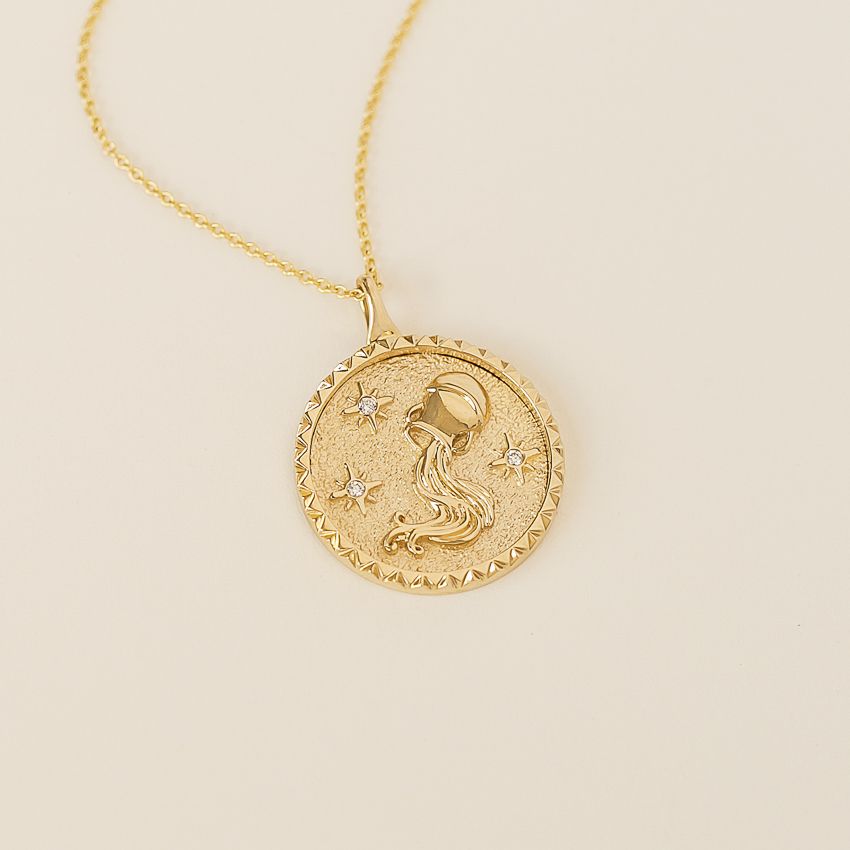
Aquarius, the eleventh sign of the zodiac, reigns from January 20 to February 18 and is symbolized by the water bearer pouring forth knowledge and enlightenment. Individuals born under this sign are known for their humanitarian ideals, intellectual curiosity, and revolutionary spirit. Ruled by Uranus, the planet of innovation and originality, Aquarians possess a keen intellect and a deep-seated desire to challenge the status quo, driving them to seek new perspectives and unconventional solutions to societal issues. Keep reading to discover the best jewelry for Aquarius zodiac signs.
Aquarius Traits
Aquarius are natural visionaries, often ahead of their time, with a strong sense of social justice and a commitment to making the world a better place. Despite their independent nature, Aquarians value friendship and community, often forming strong bonds with like-minded individuals who share their passion for social change and intellectual pursuits.
What jewelry best represents the Aquarius zodiac?
When adorning an Aquarius, it’s crucial to select jewelry that reflects their progressive outlook and commitment to social change. Here are some key elements to consider:
Statement Pieces: Opt for bold and unconventional jewelry designs that capture Aquarius’ innovative spirit and avant-garde style. Look for statement necklaces, oversized earrings, or chunky bracelets that serve as conversation starters and reflect their willingness to embrace the unconventional.
Symbolic Motifs: Embrace Aquarius’ symbol, the water bearer, in jewelry designs that evoke themes of enlightenment, progress, and social consciousness. Whether in pendants, rings, or earrings, water-inspired motifs or abstract representations of the water bearer serve as powerful symbols of Aquarius’ humanitarian ideals and commitment to collective well-being.
Ethical and Sustainable Materials: Choose jewelry crafted from ethically sourced materials such as repurposed metals or conflict-free gemstones that align with Aquarius’ values of social responsibility and environmental consciousness. Look for pieces that prioritize sustainability and ethical practices in their production processes, reflecting Aquarius’ commitment to creating positive change in the world.
Jewelry for Aquarius Zodiac Signs
Discover our top jewelry picks for the Aquarius zodiac.
Aquarius Zodiac Charm Bracelet
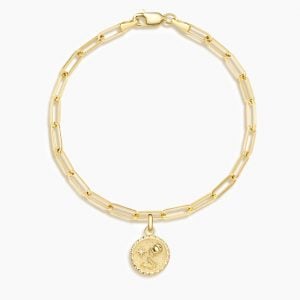 A water-bearing jug embossed on a disc adorned with a starlike diamond empowers this paperclip charm bracelet and its wearer with the characteristics of the Zodiac air sign Aquarius.
A water-bearing jug embossed on a disc adorned with a starlike diamond empowers this paperclip charm bracelet and its wearer with the characteristics of the Zodiac air sign Aquarius.
Solidarity Diamond Pendant
Strength in unity, resiliency, and hope define this diamond pendant that hangs elegantly from a lustrous cable chain.
Monaco Aquamarine Ring
Floating shared prong set aquamarines shimmer from the top half of this delicate and dazzling band for a spectacular look.
Fairmined Spira Diamond Hoop Earrings
A twist of shimmering diamonds adds a hint of sparkle to the classic, sleek design of these elevated hoop earrings.
Aquarius Zodiac Engravable Tag Pendant
This handsome tag pendant features the engraved Zodiac symbol that represents the Aquarius sign.
Sol Starburst Diamond Bracelet
 Drawing inspiration from the warmth and energy of the sun, this star-studded bangle emanates celestial shine, wrapping you in layers of light
Drawing inspiration from the warmth and energy of the sun, this star-studded bangle emanates celestial shine, wrapping you in layers of light
Toi et Moi London Blue Topaz and Lab Alexandrite Cocktail Ring
Shimmering in hues of brilliant blue and alluring purple, this rare toi et moi ring is as on trend as can be and features a London Blue topaz and a lab alexandrite as a perfectly matched pair.
Knife Edge Hoop Earrings 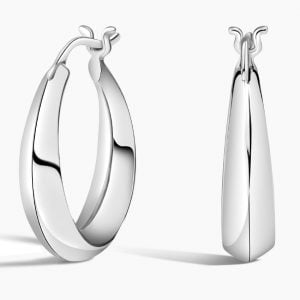 These staple hoops are defined by a classic knife edge that adds a hint of edgy chicness to an everyday design that is perfect on its own and easily paired with other hoops or studs to create a trendy stack.
These staple hoops are defined by a classic knife edge that adds a hint of edgy chicness to an everyday design that is perfect on its own and easily paired with other hoops or studs to create a trendy stack.
Aquarius Zodiac Diamond Pendant
An impression in the symbolic shape of the Aquarius sign is carved into the textured second side while a single flush set diamond shines through from the front to the back, adding versatility to this remarkable design.
Wave Sapphire Pendant
A sterling silver wave sparkles with a blue sapphire, and is gracefully suspended from a delicate sterling silver cable chain.
Aquarius Zodiac Diamond Signet Ring
An embossed water-bearing jug and a starlike diamond empower this signet and its wearer with the characteristics of the Aquarius zodiac sign.
Fairmined Tierra Diamond Cuff Bracelet
A line of diamonds flows across the surface of this lustrous cuff while an engraved Fairmined stamp on the inner edge signifies its responsible origins.
Lab Emerald Tube Ring
Our favorite colorful statement piece, this lab emerald-adorned tube ring is the must-have signature for every season.
Still interested in learning more about zodiac jewelry? Check out our other zodiac guides: Aquarius, Pisces, Aries, Taurus, Gemini, Cancer, Leo, Virgo, Libra, Scorpio, Sagittarius, and Capricorn


